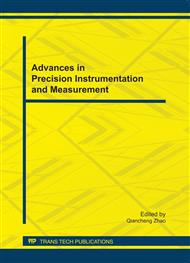p.504
p.509
p.513
p.518
p.525
p.531
p.536
p.541
p.545
Assessing Desertification with Soil Indicators in Agro-Pastoral Transition Zone of Northern Shaanxi
Abstract:
Desertification assessment is an instrumental component in developing global regional actions plans which aim at preventing and remedying desertification, a global and regional environmental problem. This research integrated selected soil parameters (physical properties, chemical properties) with plant canopy and used principal components analysis (PCA) and regression analysis to assess the severity of desertification risk. The northern part of Shaanxi province in China was taken as a case study and soils carrying different plant canopy were sampled in the 0-20 cm layer. Two soil indicators were selected from 17 basic soil physicochemical indexes. They were 0.25-0.05 mm soil sand content and soil organic matter content. An evaluation system was established by using these indicators, to assess the desertification extent by the content of 0.25-0.05 mm sand and soil organic matter at the 0-20 cm layer. The system developed may be used to assess the desertification process and distinguish the areas sensitive to desertification in the study region and in regions with similar characteristics.
Info:
Periodical:
Pages:
525-530
Citation:
Online since:
September 2011
Authors:
Price:
Сopyright:
© 2012 Trans Tech Publications Ltd. All Rights Reserved
Share:
Citation:


